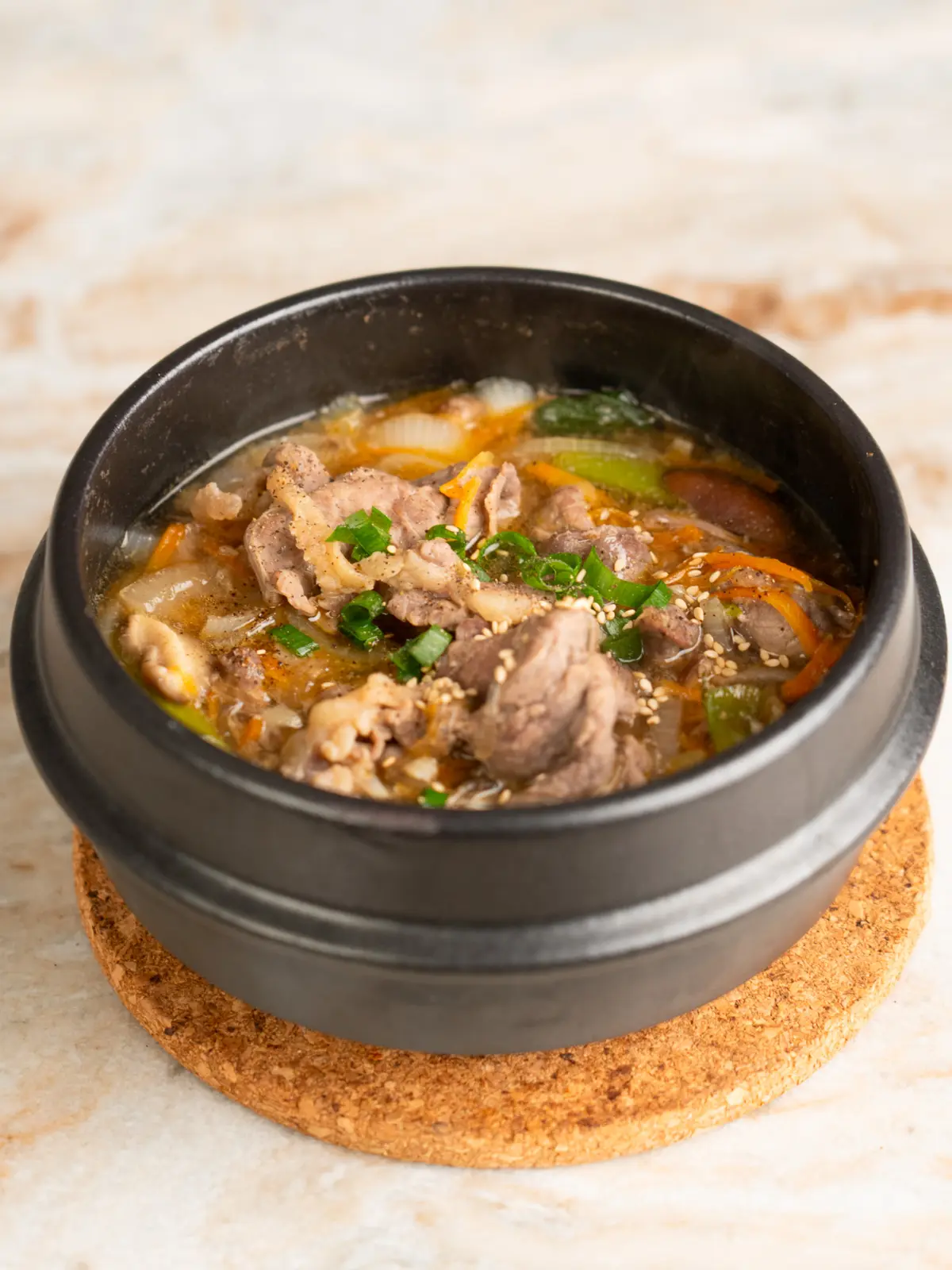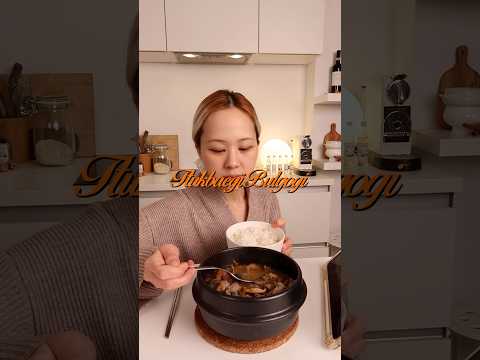Today, let’s make Quick Ttukbaegi Bulgogi 뚝배기 불고기, a bulgogi recipe that doesn’t require long marinating. This is actually a common way busy Koreans enjoy bulgogi at restaurants or at home. It has a light, savory broth that makes it perfect for mixing with rice—just like a comforting bulgogi stew.
Table of Contents
What is Bulgogi? 불고기
Bulgogi is a Korean meat dish made from thinly sliced beef or pork that is marinated and then grilled or stir-fried. Some versions are cooked over an open flame, while others, like today’s recipe, have a soupy consistency with a flavorful broth. Bulgogi is usually seasoned with a soy sauce-based marinade, but when gochujang (Korean red chili paste) is used, it’s called gochujang bulgogi.
What is Ttukbaegi Bulgogi? 뚝배기 불고기
Ttukbaegi Bulgogi is a soupy version of bulgogi served in a single serving ttukbaegi (Korean clay pot, earthenware pot), hence Ttukbaegi Bulgogi is also called clay pot bulgogi or hot pot bulgogi in English. It consists of thinly sliced beef marinated in a sweet soy sauce-based seasoning, along with vegetables such as carrots, mushrooms, and onions. Glass noodles (dangmyeon) or extra mushrooms may be added to enhance the depth of the broth, which is infused with both vegetable and beef flavors.
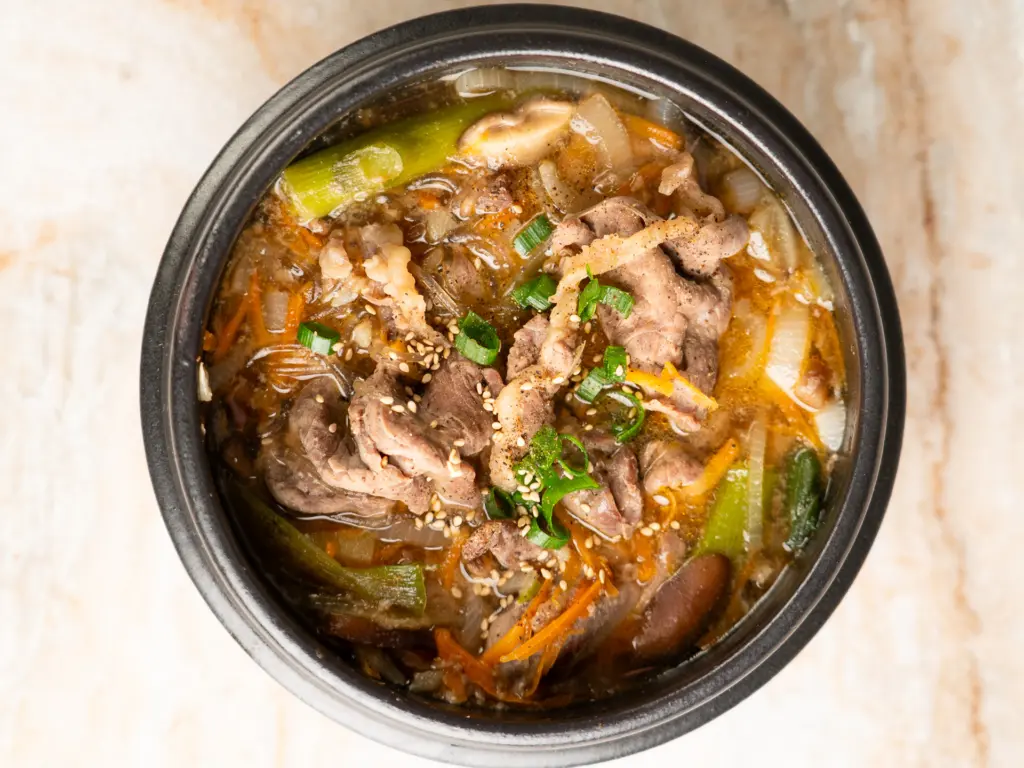
This dish is popular with busy Koreans because it doesn’t require long marinating, making it a quick and satisfying meal. It’s also a common menu item in Korean restaurants because it can be quickly prepared and served as a single serving. You’ll often find it in quick-service restaurants such as gisa sikdang (taxi drivers’ diners), bunsikjip (casual eateries popular with students), and highway rest stops.
Unlike grilled bulgogi(Korean bbq beef bulgogi), ttukbaegi bulgogi comes with a rich, sweet broth and chewy glass noodles. You can enjoy the meat and vegetables separately with side dishes, but the best way to eat it is to pour the broth and bulgogi over rice and mix everything together like a bulgogi bibimbap-a truly delicious way to enjoy this dish!
Why You’ll Love Ttukbaegi Bulgogi
- Quick & Easy – No need to marinate for hours; just mix and cook!
- Accessible Ingredients – No special Korean ingredients required; you can make it with everyday groceries.
- No Ttukbaegi? No Problem! – A regular pot or small saucepan will work just as well.
What Is Beef Bulgogi Made Of?
First, bulgogi is made with thinly sliced beef (1-2mm thick). Instead of expensive cuts like ribeye, it typically uses leaner, more muscular cuts that would be too tough if eaten thick, but become tender when sliced thin and cooked. I’ll discuss the best beef cuts for bulgogi in more detail below.
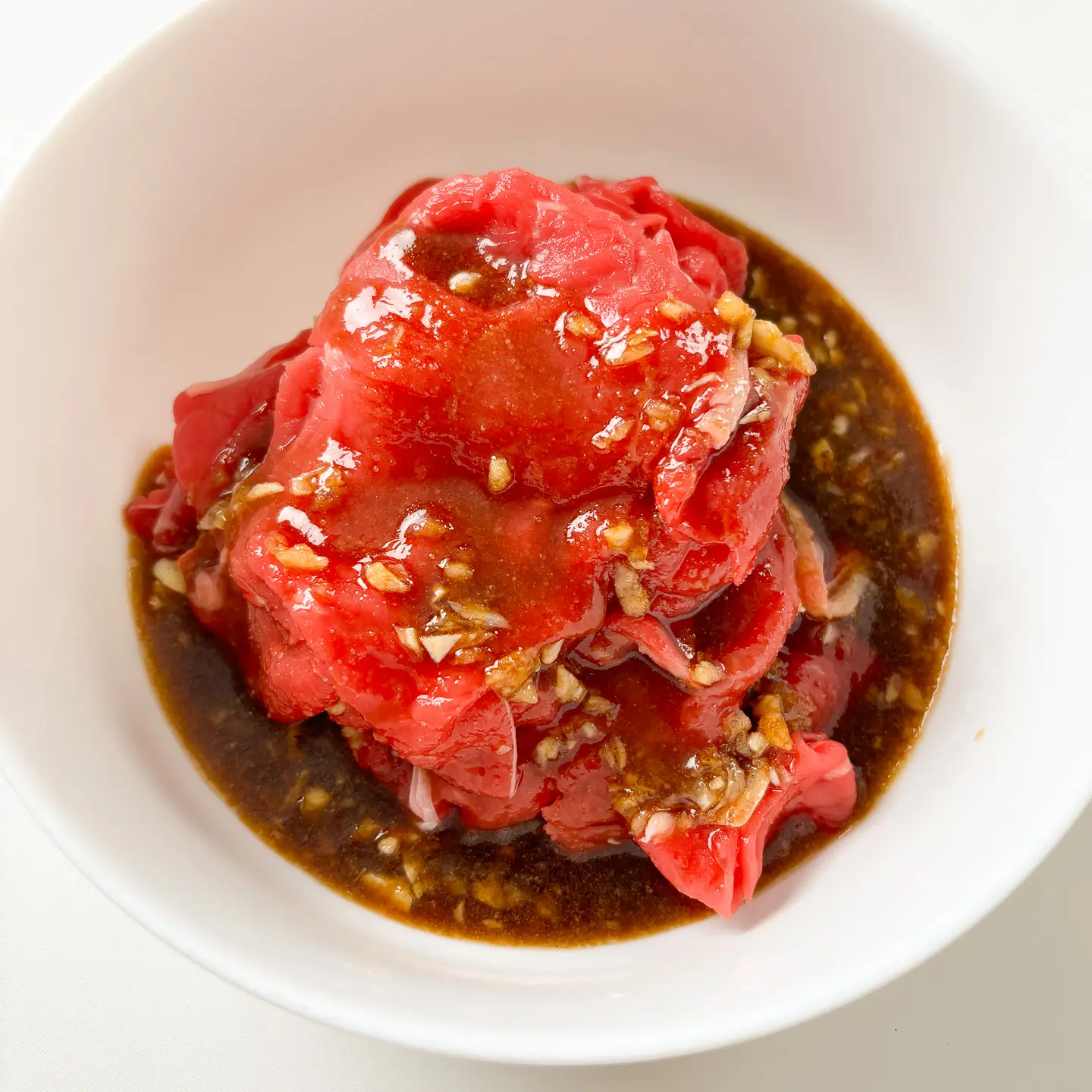
The marinade has a sweet and savory base of soy sauce and sugar, enhanced with flavorings like onion, carrot, and green onion for extra depth of flavor. You can also add mushrooms, glass noodles, or other ingredients to customize it.
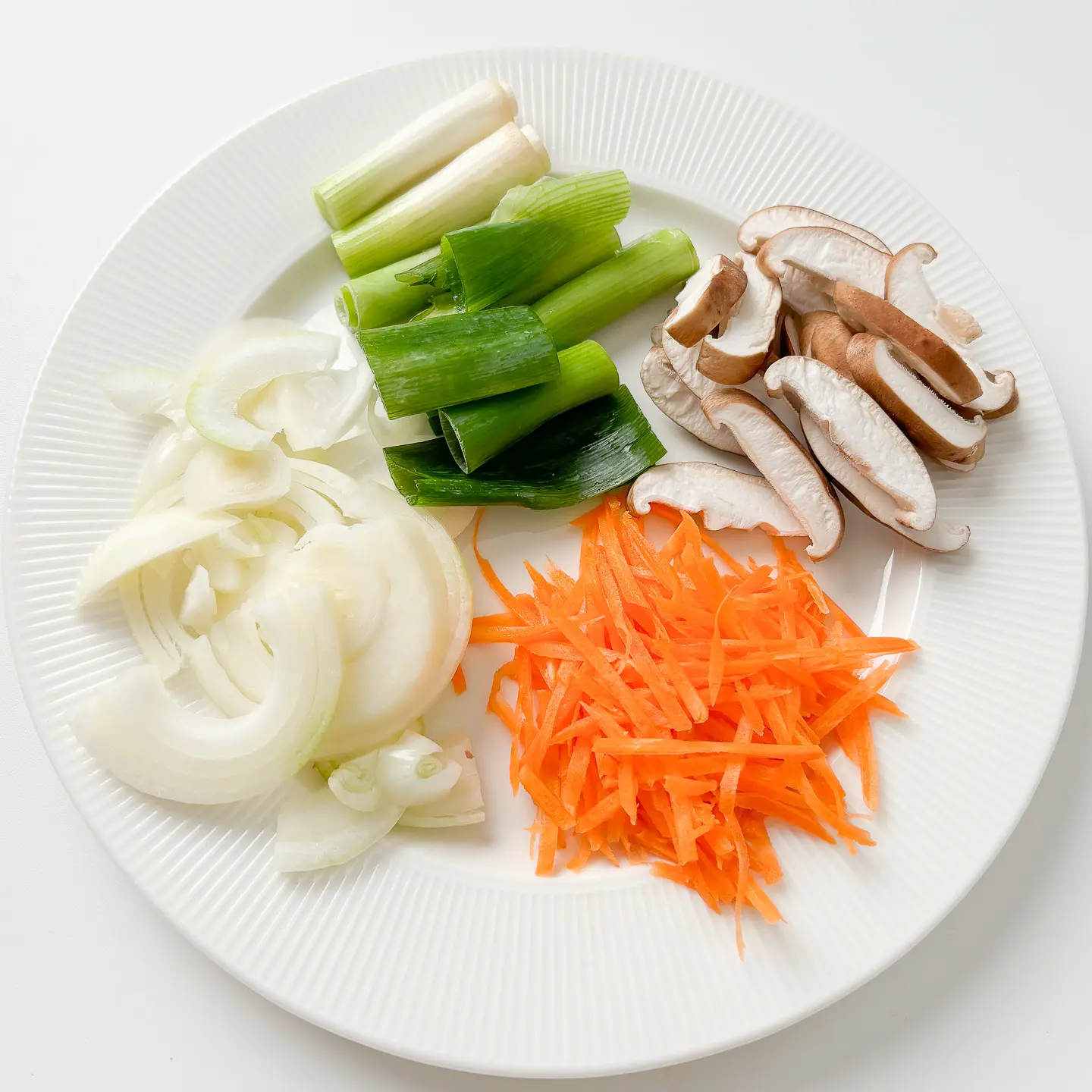
Traditional bulgogi usually requires at least 2 hours of marinating, but today I’ll show you a quick version that requires no waiting!
What Does Bulgogi Taste Like?
Bulgogi has a deeply savory, sweet, and slightly salty flavor from its soy sauce-based marinade, combined with the rich umami of beef. The addition of vegetables enhances its natural sweetness and creates a broth-like layer of extra umami that makes every bite incredibly flavorful.
What Is Served with Bulgogi?
Bulgogi is often served with a variety of side dishes (banchan) and rice in traditional Korean meals. It is commonly accompanied by:
- Rice: Bulgogi is delicious when paired with warm rice. The flavorful juices from the bulgogi blend perfectly with the rice, creating a satisfying bite.
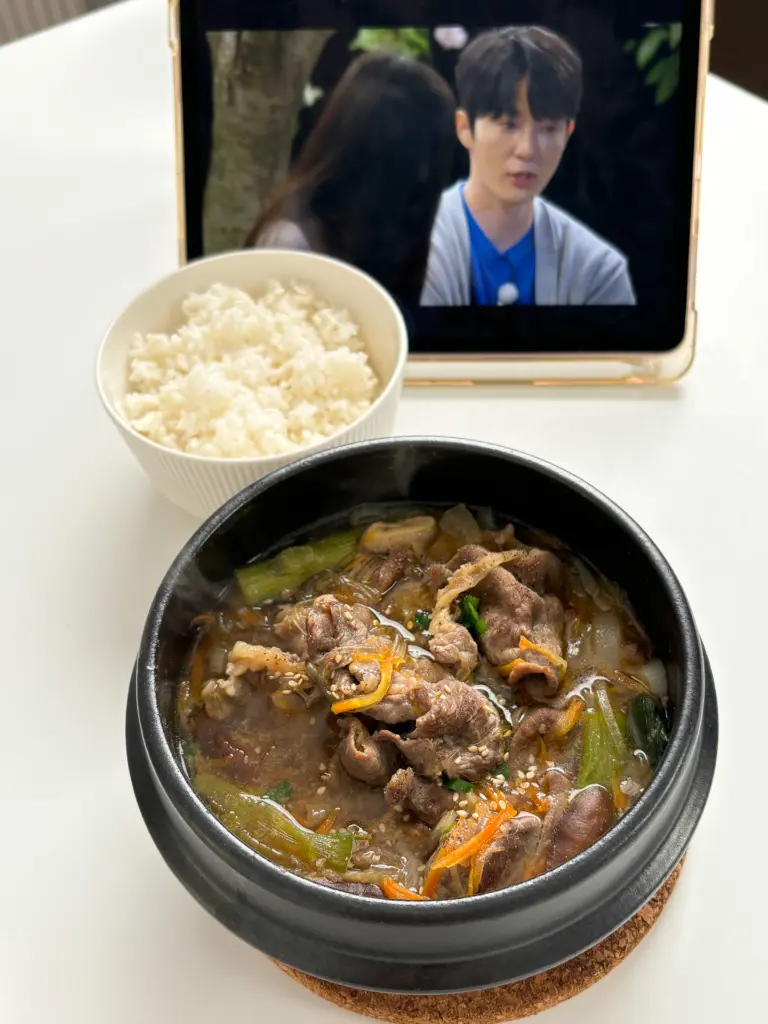
- Kimchi: A staple of Korean cuisine, kimchi’s spicy and tangy flavor contrasts beautifully with the sweetness of bulgogi.
- Ssam (lettuce wraps): Bulgogi can be wrapped in fresh lettuce or perilla leaves, often with a spoonful of rice, a dollop of ssamjang (spicy dipping sauce), and a bite of garlic or chili pepper.
- Pickled vegetables: Simple pickled vegetables like mu (pickled radish) or pickled cucumber balance the richness of the bulgogi with their crisp and tangy flavor.
What Cut of Meat is for Bulgogi?
- Cuts for Bulgogi: Bulgogi can be made from different cuts such as neck (mokshim), loin (deungsim), chuck (apdari), and round (udunsal). These cuts are chosen because they have less marbling and more muscle and tendon, making them tougher when eaten thick. However, when sliced thin and marinated, they become tender and flavorful.
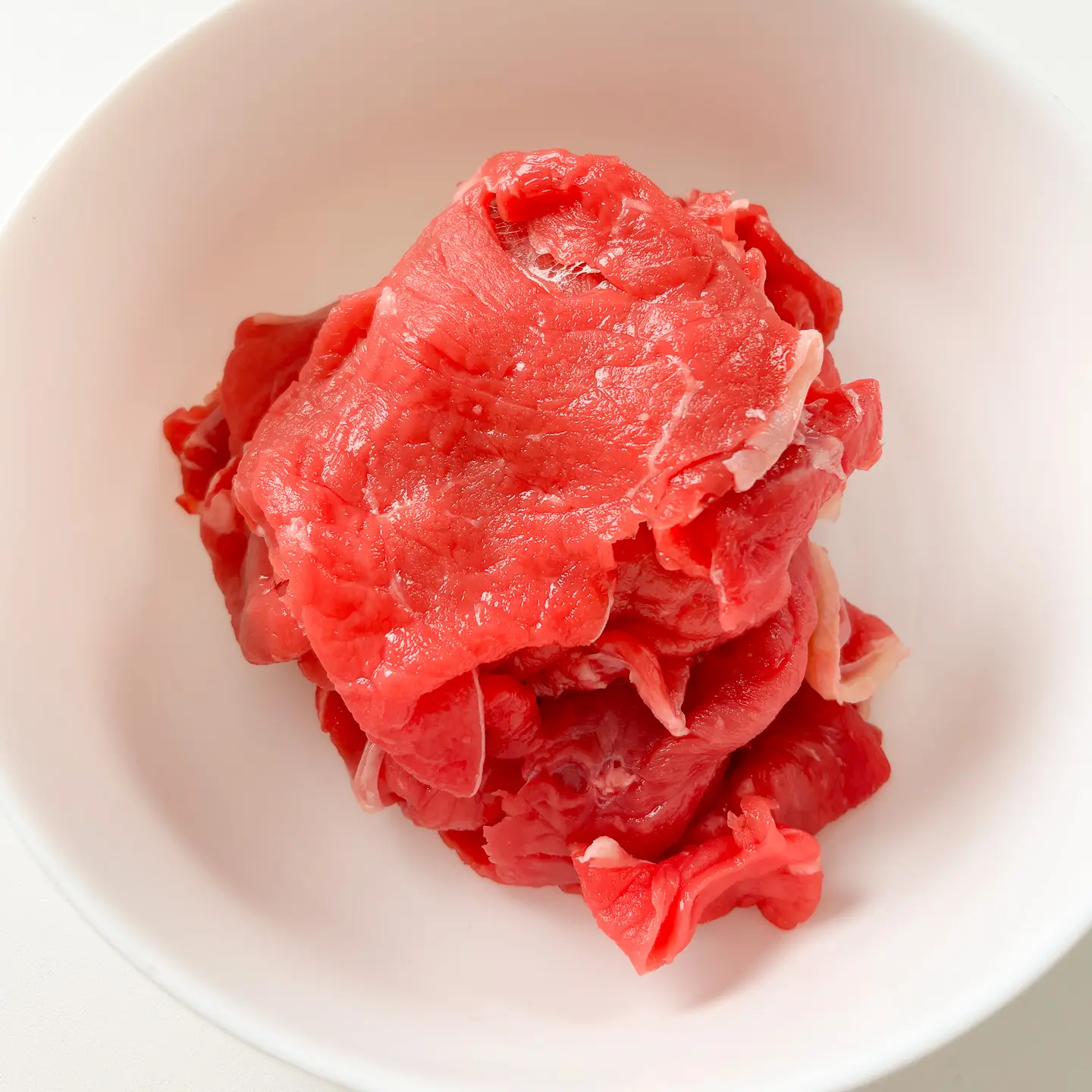
- Best Bulgogi Cut: The sirloin and rib cuts are considered the tastiest, but they are also the most expensive. Although these cuts can give you a juicy, tender bulgogi, they’re not necessary since you’ll be slicing and marinating the meat thinly, so you can save money by using cheaper cuts. cuts.
- Most Common Bulgogi Cut: The neck is the most commonly used cut. This part is tough and has firm muscles, making it a bit chewy, but when sliced thinly and marinated, it becomes tender with a rich, savory flavor. It’s lean with high protein content, and the more you chew, the more umami you taste.
- Second Most Common Bulgogi Cut: Chuck and round cuts are the second most popular for bulgogi. These cuts are tougher, with little marbling and lots of muscle and tendon. However, they are full of flavor and have a rich, meaty aroma. When thinly sliced and marinated, they become juicy and tender.
How to Buy Beef Bulgogi Meat Overseas
- To buy the right meat for bulgogi, you can ask your local butcher to slice it 1-2mm thin, which is the traditional way for bulgogi. However, many butchers may not be able to slice the meat that thin, so it’s recommended to use tender cuts like sirloin or rib for the best results.
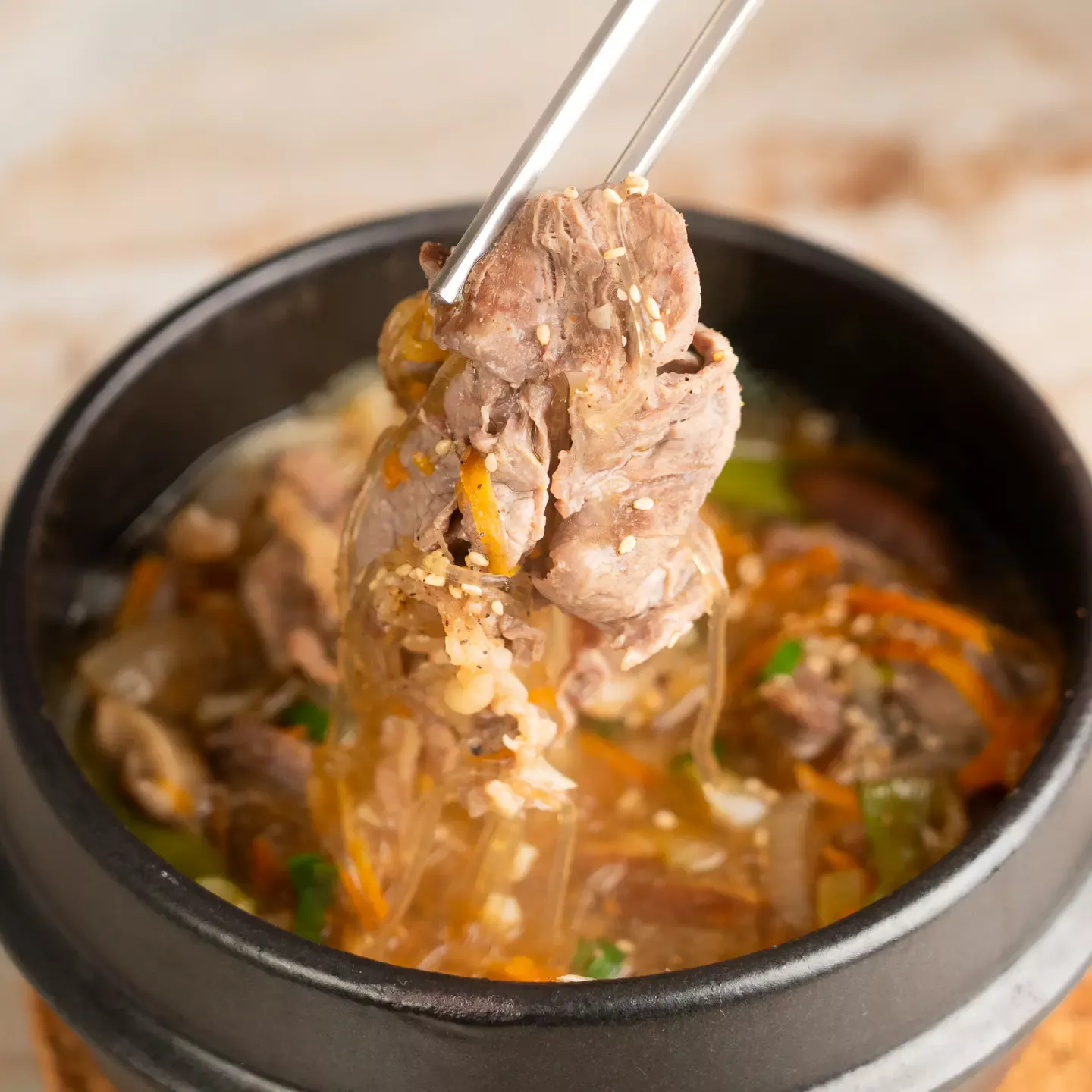
- Alternatively, you can also look for “Shabu-shabu beef” or “hotpot beef slices”, which are pre-sliced frozen meat options found in many Asian markets. These are often thinly sliced, but they might be too thin for bulgogi and the freezing process can result in an unpleasant smell if not cooked properly.
How to Slice Bulgogi Meat Yourself
In places like Belgium, Europe, and the United States, many butchers don’t slice meat thinly. Here’s how to do it yourself.
- Partially freeze the meat: Place the beef in the freezer for about 30-45 minutes to firm it up without completely freezing it. This will make it easier to slice thinly.
- Slice thinly: Use a sharp knife to slice the meat as thinly as possible. Aim for slices about 1-2mm thick, as this will allow the meat to absorb the marinade and cook quickly.
This method is commonly used by many overseas Koreans as it helps achieve the right texture for bulgogi!
How to Eat Ttukbaegi Bulgogi
Bulgogi can be eaten with rice as a side dish. Unlike grilled bulgogi, ttukbaegi bulgogi (soup-style bulgogi) has a delicious broth, making it perfect to eat with rice and the flavorful soup.
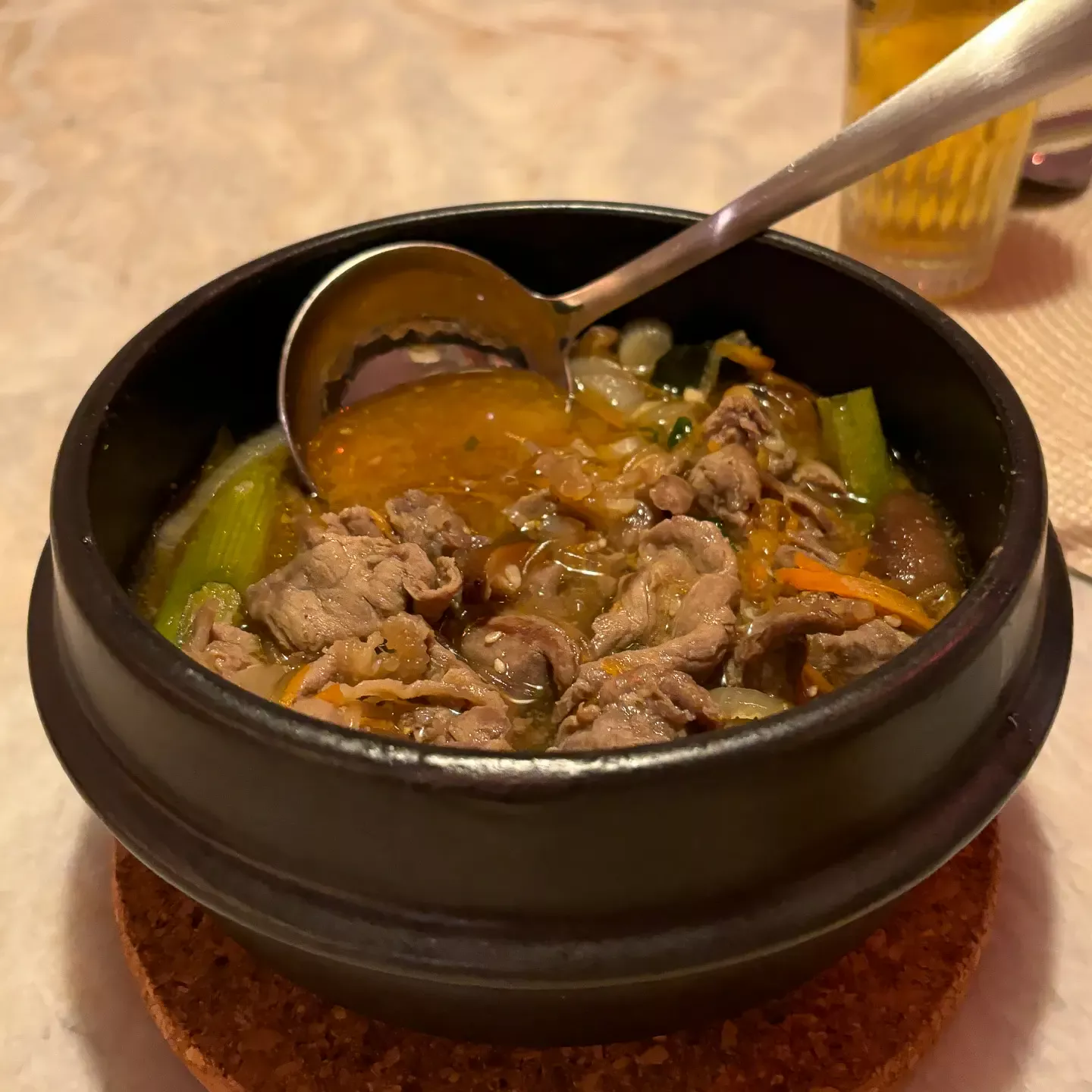
You can also put the bulgogi and broth on top of rice and mix them together to make a tasty bulgogi bibimbap. If you have lettuce, wrap the bulgogi with some ssamjang (Korean dipping sauce) and enjoy it as a fresh and tasty wrap. I will explain the details of the method below.
How Long Should Bulgogi Marinate?
For regular bulgogi, marinating for at least 2 hours to a full day is ideal. However, the ttukbaegi bulgogi recipe I’m sharing today doesn’t require marinating – it’s a quick and easy version! This is the kind of bulgogi that is served at fast-food restaurants, truck stops, and college cafeterias where a tasty meal needs to be prepared quickly. Of course, if you marinate it for 2 hours, it will be even more flavorful.
Don’t Buy Bulgogi Sauce!
You don’t need to buy pre-made bulgogi sauce! If you have basic Korean ingredients like soy sauce and sesame oil, You can make a quick and healthy bulgogi sauce at home. Making it yourself is not only more delicious, but it’s also a healthier option. Today, I’m going to share the secret to making this easy, tasty sauce!
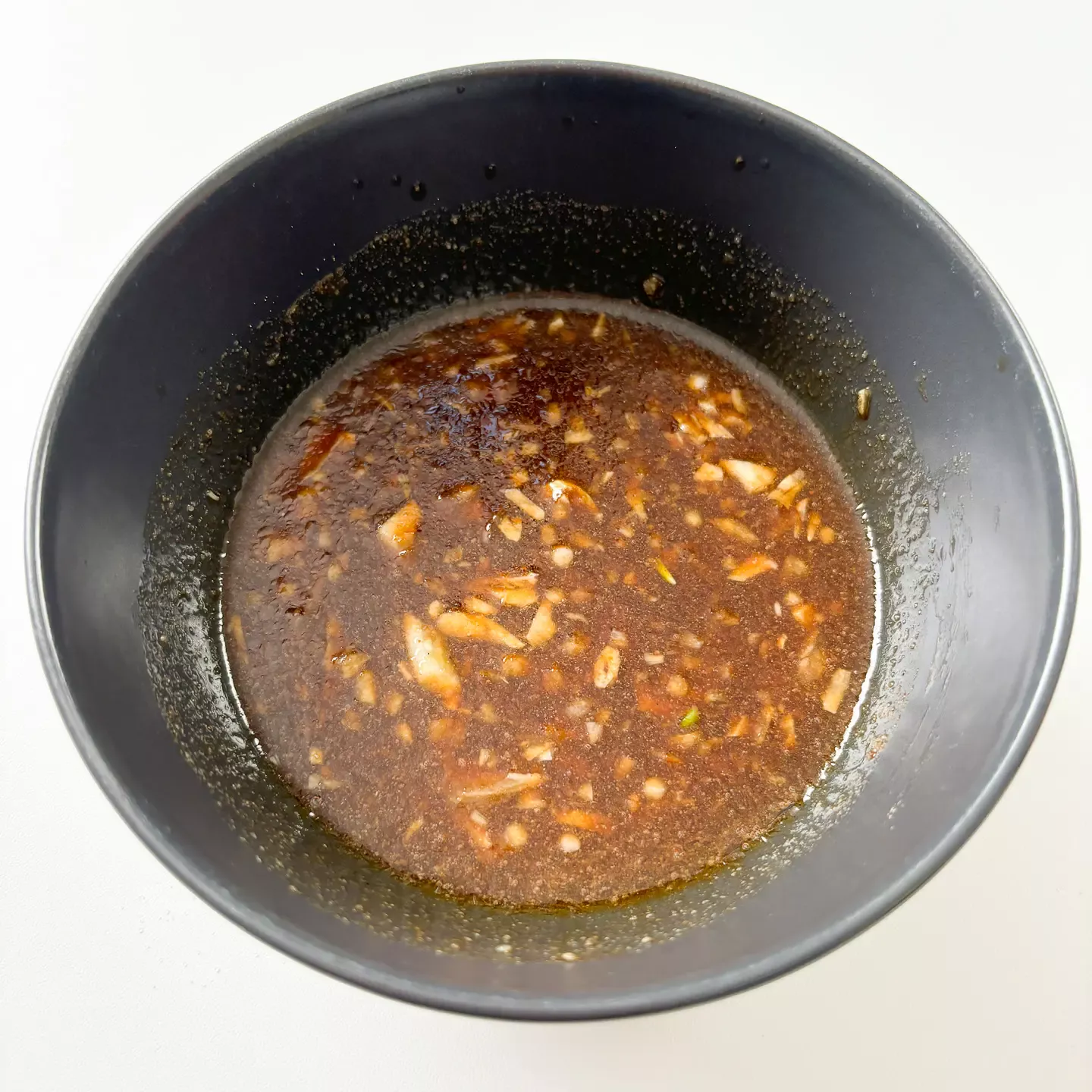
How to Enjoy Ttukbakegi Bulgogi
With rice and side dishes: Enjoy the bulgogi with vegetables, meat, and noodles as a side dish with rice.
Eating with broth: The best way to eat ttukbaegi bulgogi is to dip your rice in the flavorful broth.
Bulgogi over rice: For a delicious bulgogi deopbap (rice bowl), place the bulgogi and broth on top of rice and mix it all together like bulgogi bibimbap. It’s a perfect combination.
Wrapping in lettuce: For a fresh, savory bite, place bulgogi, ssamjang (Korean dipping sauce), and rice in a lettuce wrap and enjoy in one bite.
Recommended side dishes: This dish doesn’t really need many side dishes, but kimchi is the perfect complement to complete the meal.
Substitute Tips for Hard-to-Find Ingredients Abroad
- Ttukbaegi (Earthenware Pot): You can use a regular pot instead of a ttukbaegi, just make sure it’s narrower.
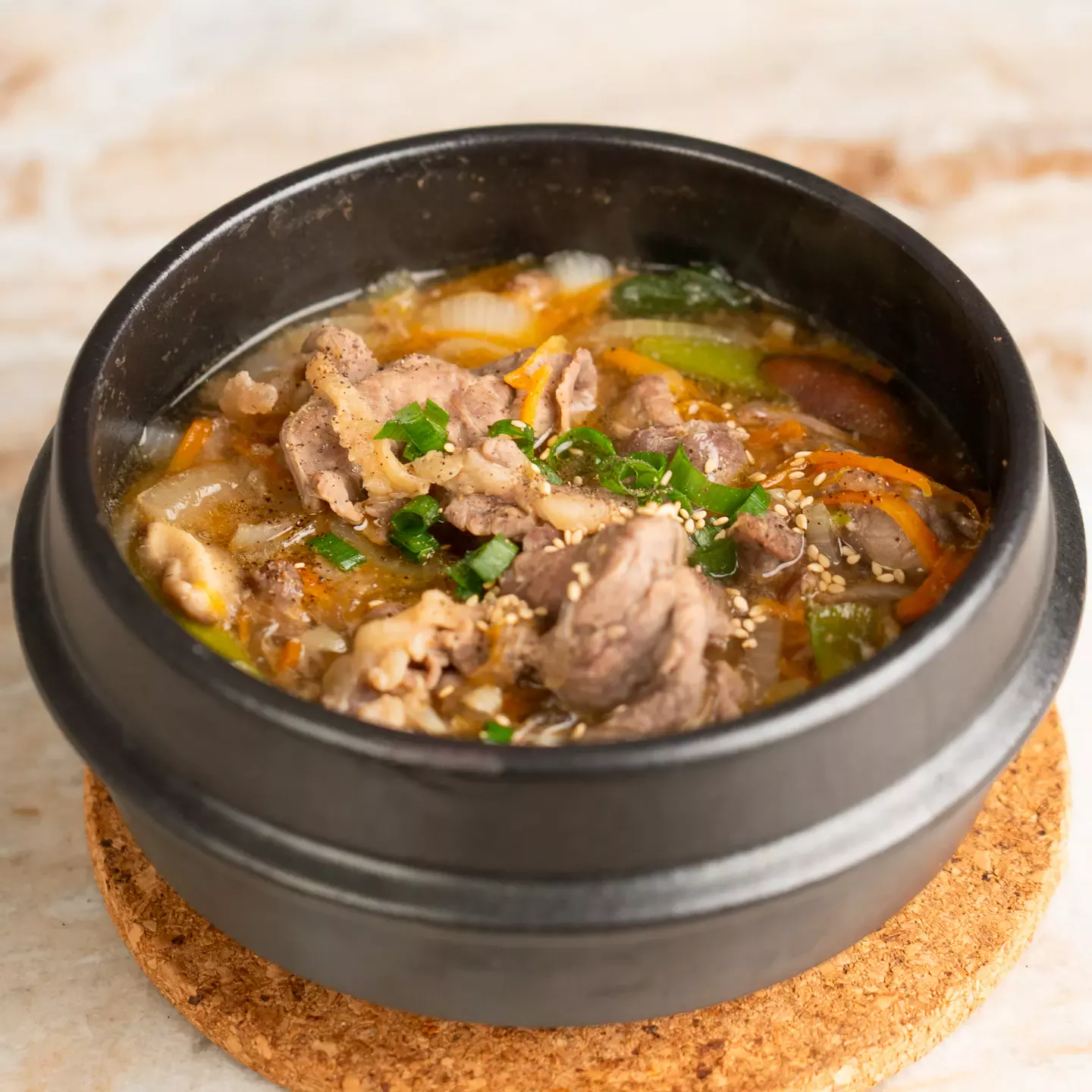
- Here is a recipe for bibimbap that can be made in a ttukbaegi (stone pot). While it’s slightly different from the traditional dolsot bibimbap, using a ttukbaegi is a great alternative, especially since dolsot pots can be harder to find overseas.
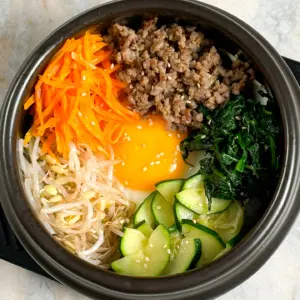
- Shiitake Mushrooms: You can replace shiitake mushrooms with button mushrooms or porcini mushrooms. While enoki mushrooms are often used in Korea, they may be harder to find abroad compared to shiitake mushrooms.
- Beef Dashi (Soup Base): Instead of beef dashi, you can use beef stock or chicken stock. Beef stock is preferred, but you can add a little MSG if needed to enhance the umami.
- Plum Syrup (Maechilcheong): Although you won’t get the same tangy and fragrant taste from plum syrup, sugar can be used as a substitute. Keep in mind that sugar is sweeter than plum syrup, so adjust the amount accordingly. Adding a little mirin (sweet rice wine) will also improve the flavor.
Get Ingredients
Ttukbaegi (clay pot, earthenware pot)
- https://amzn.to/4kfRKZX (US), https://amzn.to/4kfRKZX (NL), https://amzn.to/3F3yvmg (DE)
Vegetable Slicer
In Korea, where many dishes require finely sliced vegetables, a vegetable slicer is essential.
- https://amzn.to/3Rb2r2D (US), https://amzn.to/41zSxN1 (NL), https://amzn.to/4itKiJa (DE)
Dasida
- https://amzn.to/4iyh9gb (US), https://amzn.to/41PSmNz (NL), https://amzn.to/3RaARTg (DE)
Rice
- https://amzn.to/4bdcfCH (US), https://amzn.to/41xxThP (NL), https://amzn.to/4kgVgmQ (DE)
Soy Sauce
- https://amzn.to/4gYk1BJ (US), https://amzn.to/4gW8zGv (DE)
Sesame oil
- https://amzn.to/3QCZIyE (US), https://amzn.to/43fg5cn (DE), https://amzn.to/4bdP8Ys (NL)
Mirin (cooking wine)
Plum Syrup
- https://amzn.to/4hPcjLl (US), https://amzn.to/4hSBvAH (NL)
Sesame seeds
- https://amzn.to/3D85aXg (US), https://amzn.to/3EQVBwt (DE), https://amzn.to/3D7C6iD (NL)
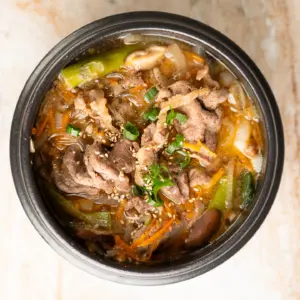
Quick Ttukbaegi Beef Bulgogi. No Marinating Required!
Equipment
- 1 ttukbaegi (Korean clay pot, eartenware pot) (a normal pot will work as well but should be narrow like ttukbaegi)
- 1 Bowl
- 1 Cutting board & knife
- 1 Spoon
- 1 vegetable slicer (easy to cut vegetables)
Ingredients
- 400 g thinly sliced beef bulgogi cut, Detailed information can be found in the blog post above.
- 1/2 onion
- 1/3 carrot
- 3 shiitake mushrooms
- 1/2 stalk green onion
- 1 handful glass noodles (soaked for 1 hour, optional ingredients)
- 300 ml water
- 1 pinch sesame seeds (optional)
Bulgogi Marinade
- 5 tbsp soy sauce (jin ganjang)
- 2 tbsp sugar
- 1 tbsp plum syrup (you can use sugar instead, but 0.5tbsp sugar)
- 2 tbsp matsul or mirin (cooking wine, wine, other alcohol will work)
- 1 tbsp Korean beef dasida (Beef stock can be substituted. Other alternative ingredients can be found in the blog post above.
- 1 tbsp sesame oil
- 1 tbsp minced garlic
Instructions
- Soak the glass noodles in water for 1 hour before cooking.
- Prepare the Bulgogi marinade by mixing soy sauce (5 tbsp), sugar (2 tbsp), plum extract (1 tbsp), cooking wine (2 tbsp), beef stock powder (1 tbsp), sesame oil (1 tbsp), and minced garlic (1 tbsp) in a bowl.
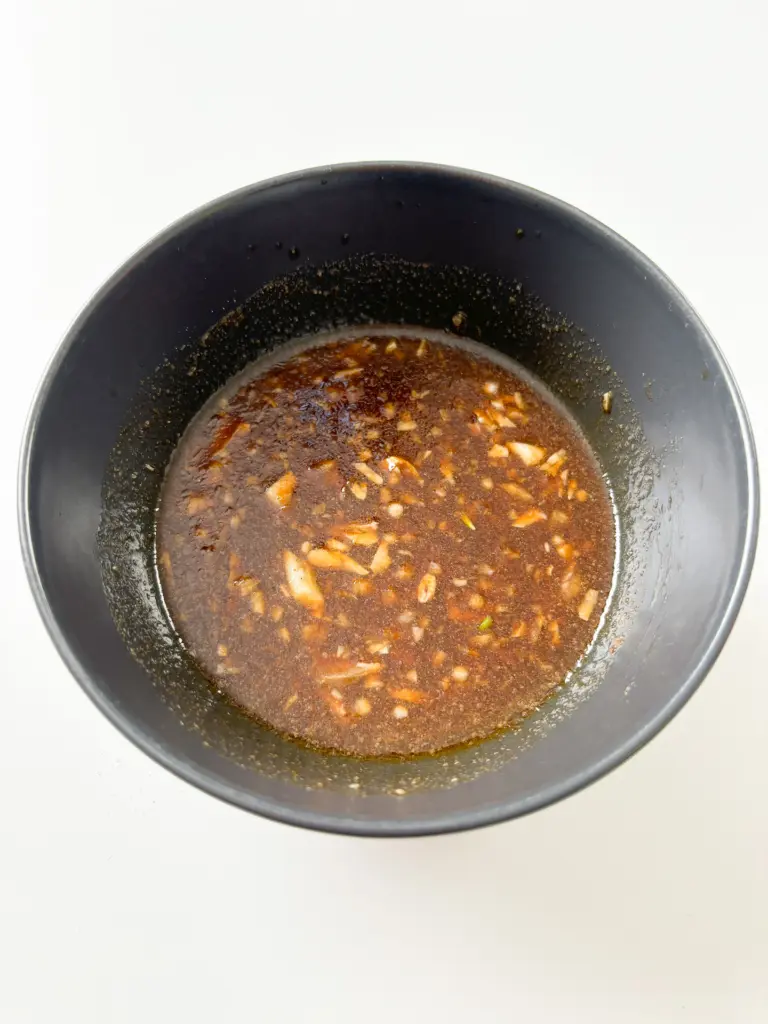
- Coat the beef evenly with the marinade and let it sit.
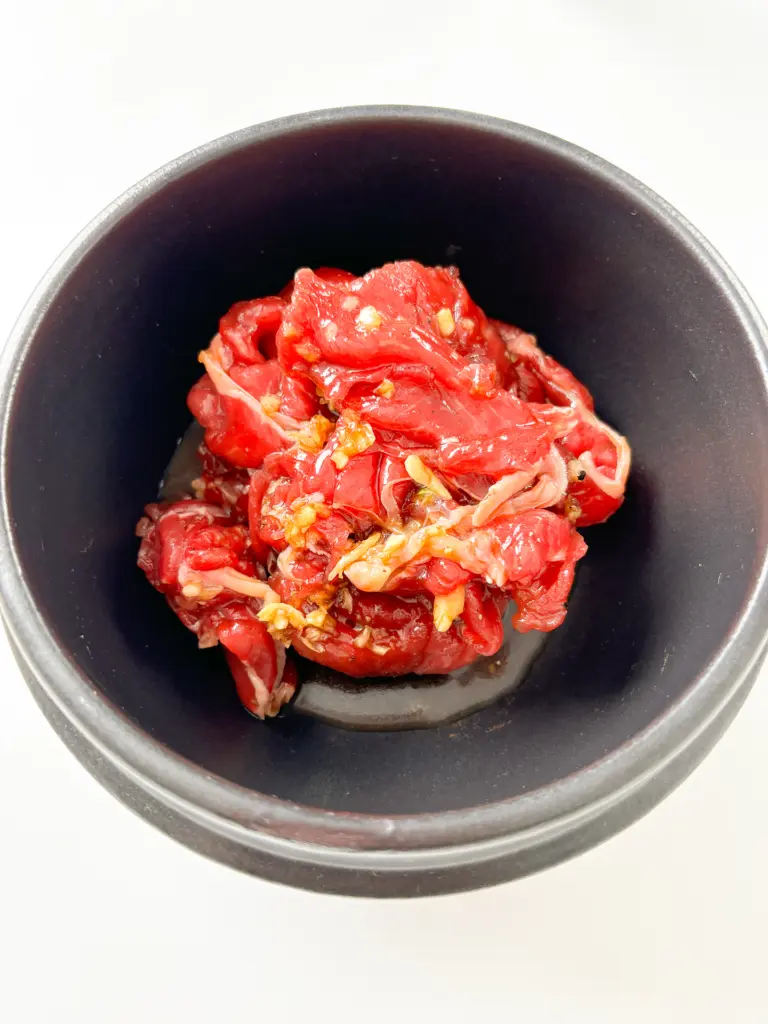
- Julienne ½ onion.
- Julienne ⅓ carrot (a vegetable slicer makes this easier and faster).
- Slice 3 shiitake mushrooms into 0.2cm thick pieces.
- Cut ½ green onion into large 3cm pieces. Finely chop a small handful (10g) of the green part for garnish.

- In a clay pot (ttukbaegi), add the marinated beef, vegetables, and soaked glass noodles. Pour in 300ml of water.
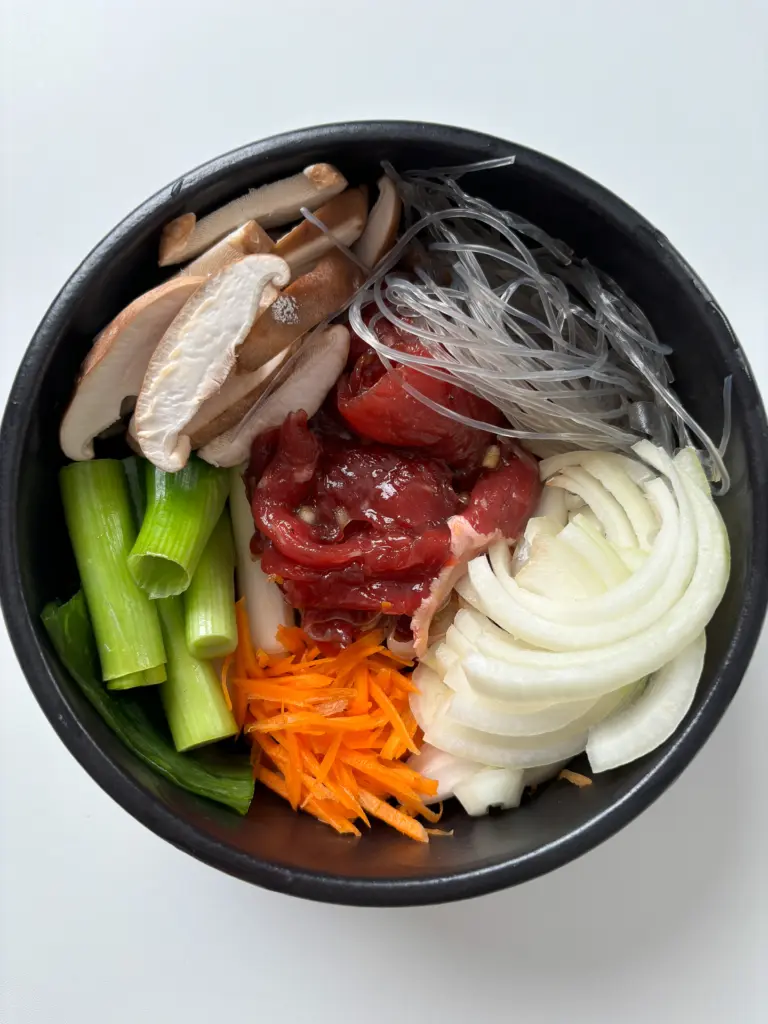
- Bring to a boil over high heat, then reduce to medium heat and let simmer for 15 minutes.
- Garnish with chopped green onion and a pinch of sesame seeds (optional).
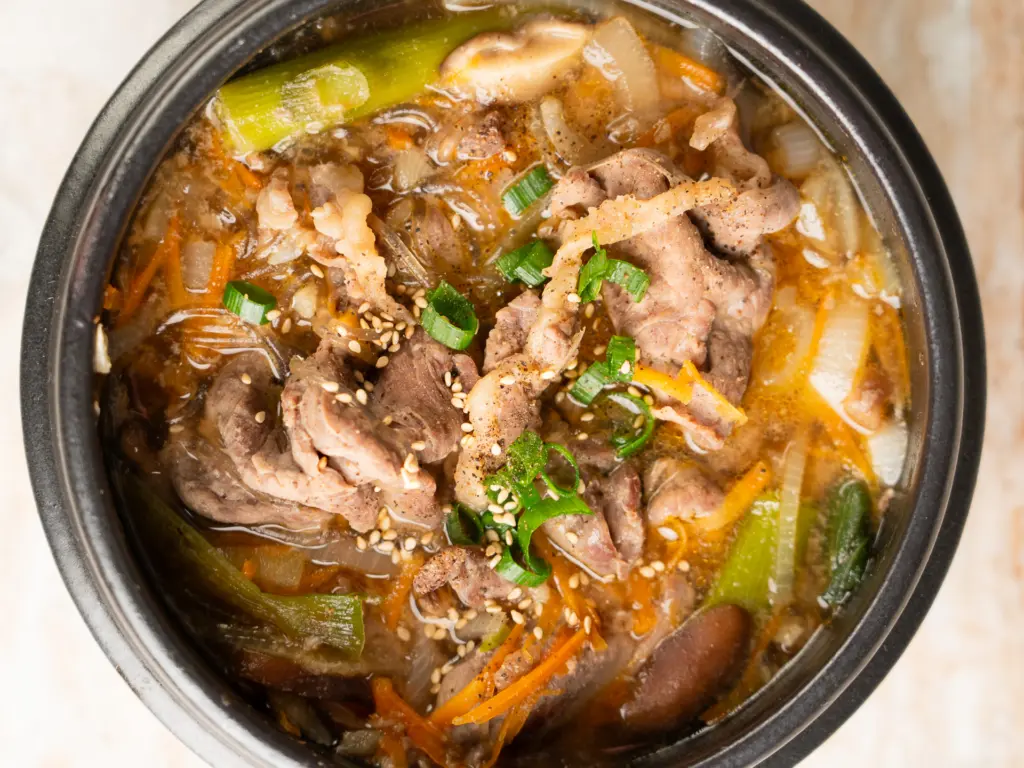
Quick Ttukbaegi Bulgogi 뚝배기 불고기
- You can enjoy the beef and glass noodles as a side dish, or for an even better experience, scoop up some rice with the bulgogi broth! If you have lettuce, make a wrap. The best ways to enjoy earthenware pot bulgogi are detailed in the blog post above.
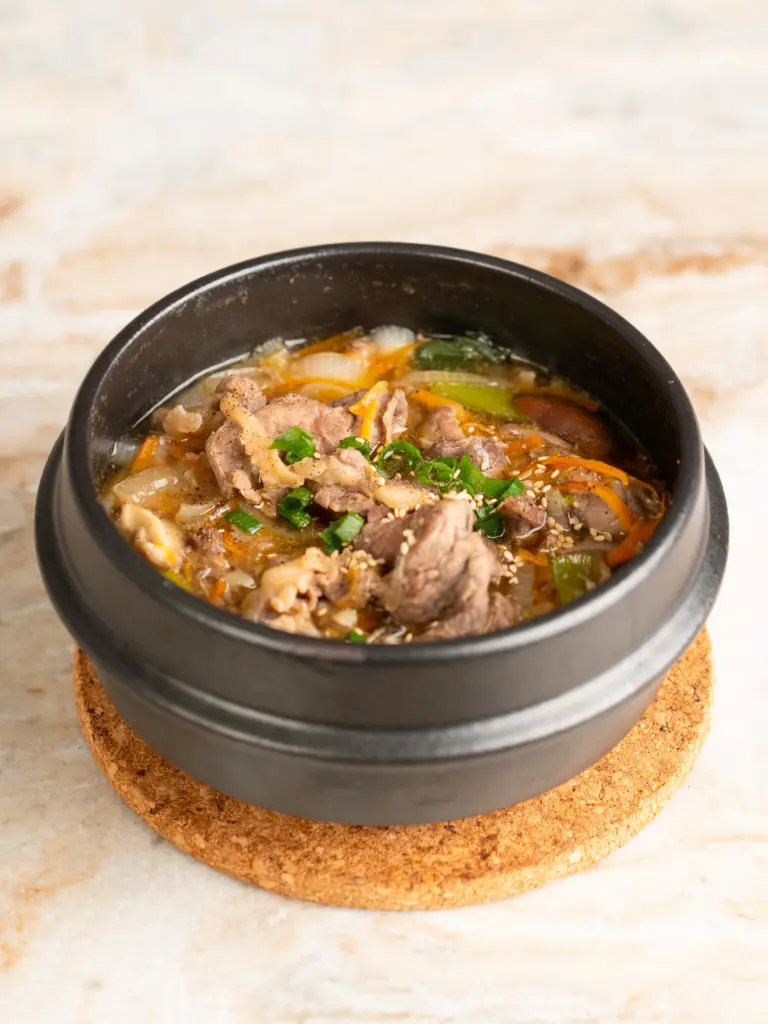
- Jal meokgetseumnida! 잘 먹겠습니다!
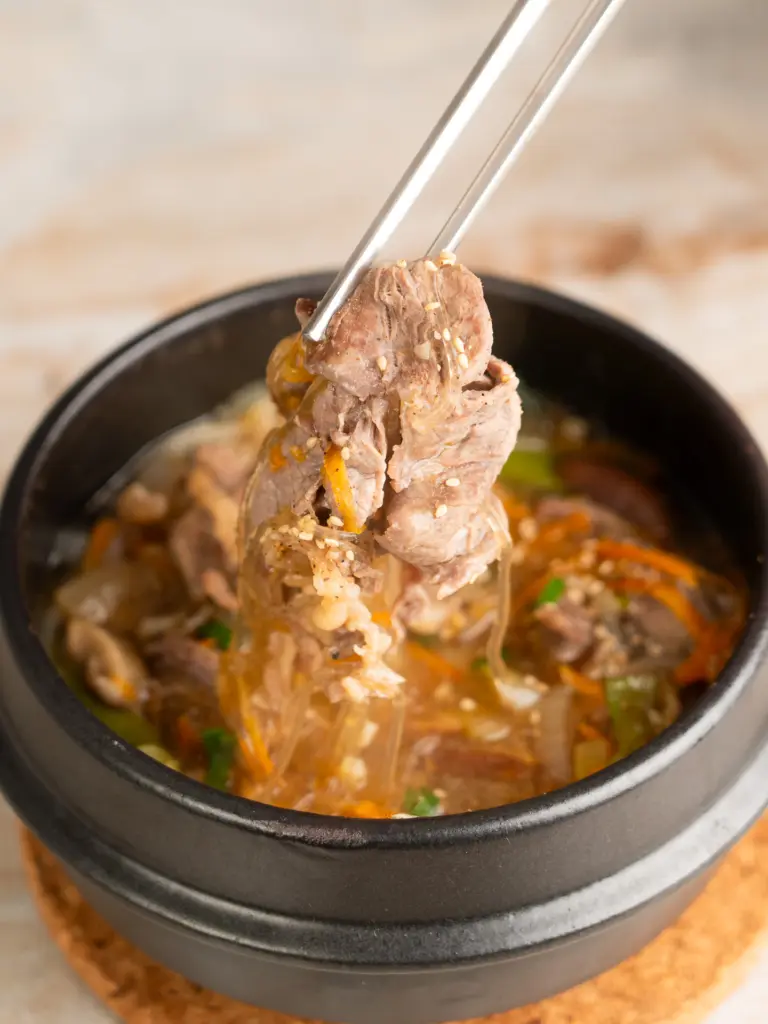
Did you make this recipe?
Please let me know how it turned out for you! Leave a comment below and tag @blondekimchi_ on Instagram and hashtag it #blondekimchi.
